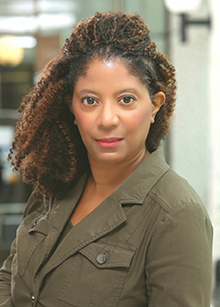The heat wave that descended on Canada's Pacific coast in the summer of 2021 was the deadliest weather event in our country's history. At least 569 people died in British Columbia in the last week of June, as temperatures hovered stubbornly above 40°CCelcius, barely cooling at night.
Heat waves don't make for the kind of dramatic imagery that wildfires or flooding do. No front-page photos of towns scorched to embers or cars floating down surging rivers. People simply collapse in park bushes or pass away quietly in their upper floor apartments.
Just as some impacts of climate change will be more visible than others, so too will some people be more vulnerable to those impacts than others. Geography will play a role, so too will a range of social factors.
Dr. Ingrid Waldron fears that the human impacts of climate change are being overlooked in a more technical conversation focussed on 1.5 versus 2 degrees warming, carbon taxes and emissions targets.
“I'm not a climate scientist,” says the Montreal-born sociologist and professor at McMaster University, “I look at the problem through the lens of race, culture, gender, physical ability and other social factors.”
And through that lens, Dr. Waldron sees that some Canadians stand to lose a lot more than others. As with the pandemic, the worst impacts of climate change will be borne by communities that are already disadvantaged by long-standing structural inequities.
At a certain level, this seems obvious. A person living in precarious housing — maybe shoddily built, maybe uninsured — is going to have a harder time recovering from flooding than someone who is securely housed. A person living on a tight budget won't just be inconvenienced by the spike in food prices caused by extreme weather events; they may actually go hungry. A person with a physical disability living in a non-air-conditioned apartment may experience a heat dome very differently from a non-disabled person living in a house with a back yard.
But it takes a second step to realize that these people — the ones who will be hardest hit in the long run — are statistically more likely to belong to certain groups: racialized, female, living with disabilities.
Dr. Waldron would like this intersectionality to be recognised by the federal government. She was the impetus behind Bill C-230, a private member's bill that called for a national strategy to address the connection between race, socio-economic status and environmental risk. Her concerns about environmental racism stem from research that demonstrates a geographic overlap between toxic industrial sites — landfills, pulp and paper mills, petrochemical facilities — and racialized and poorer communities. The arrangement exploits underprivileged and underrepresented groups, leaving them to deal with the health consequences of contaminated water, air and land.
A key example are Indigenous peoples in Canada, who are among the first to feel the effects of climate change due to their relationship to the land and the impacts of colonization. As stewards of their lands, Indigenous peoples have long been sounding the alarm about climate change, and have been leading efforts to combat it. Yet it remains that climate change threatens the ability of Indigenous peoples to exercise their inherent and constitutional rights, and to preserve and transmit their traditional knowledge and practices. This includes Autumn Peltier from the Wiikwemkoong First Nation, a teenage Water Protector, who has spoken out internationally since age 12.
As Dr. Waldron puts it: “In Canada, your postal code determines your health.”
Bill C-230 was brought forward in the House of Commons by Nova Scotia MP Lenore Zann and received two readings before dying on the order paper when Parliament was dissolved last summer. But Dr. Waldron is not giving up. She sees the potential scope of environmental racism only expanding in an era of climate change. And her concern is shared globally.

“In Canada, your postal code determines your health.”
On October 8, 2021, the United Nations Human Rights Council passed a resolution formally recognizing — for the first time — living in “a clean, healthy and sustainable environment” as a human right. Pointing to the interconnectedness of environmental degradation, climate change and human rights, it called on Member States to protect their most vulnerable populations from the worst impacts.
But Resolution 48/13 does more than that. Positioning a healthy environment as a human right strengthens the position of those fighting to combat climate change and environmental decline. Around the world, civilian groups are taking governments to court for failing to adopt policies that support a healthy environment — and they're winning.
David Boyd certainly believes they will. The Canadian environmental lawyer who is currently serving as the UN's Special Rapporteur on Human Rights and the Environment considers the resolution a breakthrough. “This has life-changing potential in a world where the global environmental crisis causes more than nine million premature deaths every year,” he told media.
As the climate crisis deepens, it is hitting Canadians closer to home — in fact, it is hitting our homes directly, and our health and our livelihoods. Understanding how those impacts play out on the ground will be vital to protecting our most vulnerable citizens. And framing a healthy environment as a fundamental human right — and not just an aspiration — may prove a decisive step in the fight for our future.